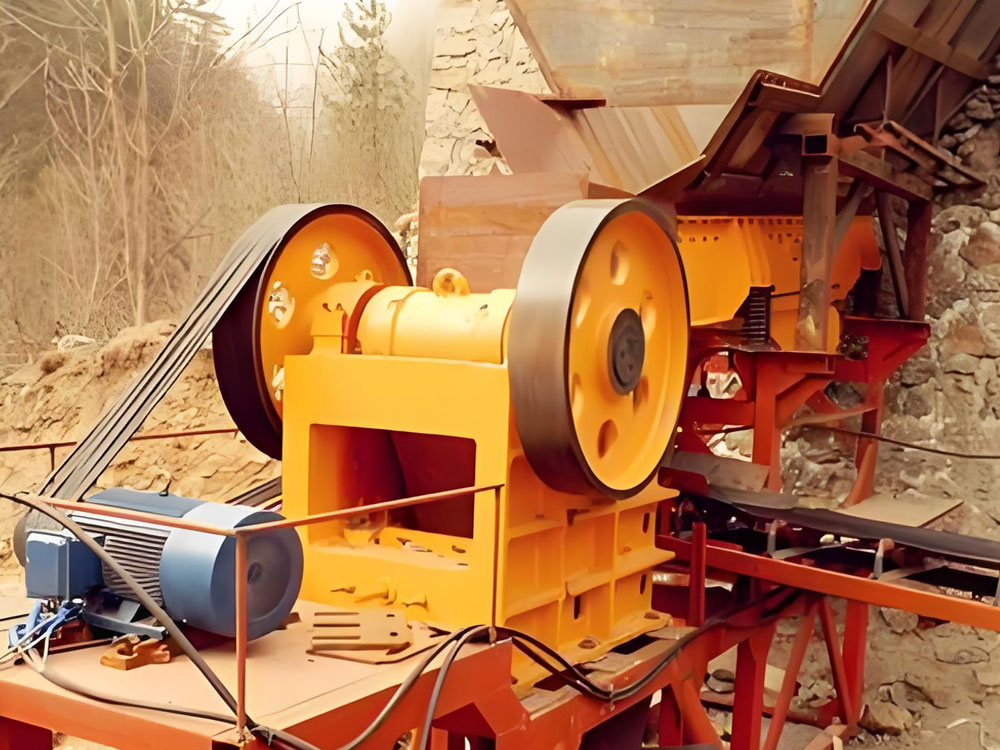Jaw Crusher Solutions for the Crushing Challenge of High-Moisture Clay Ore in Indonesia
Indonesia’s abundant mineral resources are a cornerstone of its economy. However, the country’s equatorial climate and unique geology present significant crushing challenges, particularly when dealing with high-moisture clay ore. This sticky, cohesive material often binds to itself and to crushing surfaces, leading to frequent clogging and operational downtime. While a standard jaw crusher is the workhorse for primary crushing, it requires specific features and strategies to effectively handle this difficult material.
Understanding the Crushing Problem
The high-moisture content in clay ore causes fine particles to adhere to larger ore lumps, forming a sticky mass that does not flow predictably. When this material enters a traditional jaw crusher, it can:
- Adhere to the Jaw Plates: The material sticks to the crushing surfaces, reducing the effective crushing area and forming a layer that impedes further material flow.
- Bridge in the Feed Opening: Lumps of sticky ore can get wedged in the crusher’s feed opening, preventing a smooth feed and causing a bottleneck.
- Clog the Discharge: The crushed material can clump together at the discharge end, blocking the outlet and forcing a complete shutdown for manual clearing.
These issues directly impact productivity and lead to increased maintenance costs and labor-intensive procedures.

Key Jaw Crusher Features for a High-Moisture Environment
To overcome these problems, choosing the right jaw crusher for high-moisture clay is critical. Here are the key features to look for in a reliable crushing solution:
- Optimal Jaw Plate Design: The profile of the jaw plates is the most important factor. Specialized plates with a deeper, more aggressive tooth pattern help “bite” into the sticky material and prevent it from caking onto the surface.
- Steep Nip Angle: A crusher with a steep angle between the fixed and movable jaws encourages the material to fall cleanly into the crushing chamber, reducing the risk of bridging at the feed opening.
- Heavy-Duty Construction & Powerful Stroke: A robust jaw crusher with a powerful stroke can apply enough force not just to break the rock, but also to dislodge the cohesive, sticky clay mass, ensuring consistent throughput.
- Adjustable Discharge Setting: A hydraulic adjustment system is crucial. It allows operators to quickly and easily widen the discharge gap if material begins to stick, preventing a full clog and allowing for continued operation.
Operational Strategies for Success
Even with the best mining equipment, operational practices are key to handling sticky ore.
- Controlled Feeding: A consistent, even feed rate is essential. Using a variable-speed feeder can help prevent overloading, which is a primary cause of clogging.
- Pre-Screening the Material: The most effective strategy is to remove the problematic fine particles before they reach the crusher. Using a grizzly feeder with a wide bar spacing or a simple vibrating screen can eliminate the majority of the sticky fines, allowing the jaw crusher to handle only the cleaner, rockier material.
- Regular Cleaning and Maintenance: Frequent monitoring of the crushing chamber for material buildup and scheduled cleaning are vital preventative measures.
Conclusion
The challenge of processing high-moisture clay ore in Indonesia is significant, but it is not insurmountable. By selecting a jaw crusher with key features designed to combat the issues of sticky ore and by implementing smart operational practices, mining operations can ensure a reliable and efficient primary crushing process. This combination of robust crushing solution and intelligent management is the key to minimizing downtime, increasing productivity, and ultimately, securing the profitability of a mining project in this challenging environment.
- > Impact Crusher for Quartz Sand Processing
- > Impact Crusher for Granite Processing
- > The Impact of Quartz on Crushing Equipment
- > Impact Crushers for Shaping Construction Aggregates
- > Durable PFW Series Impact Crusher: Optimizing Performance for Modern Crushing Needs
- > The Application of Jaw Crushers for Coal Crushing in Indonesia
- > Mobile Impact Crushers for Coal Processing in India
- > Mobile Cone Crushers: A Versatile Solution for Calcite Production
Hot Product


Online




Message
